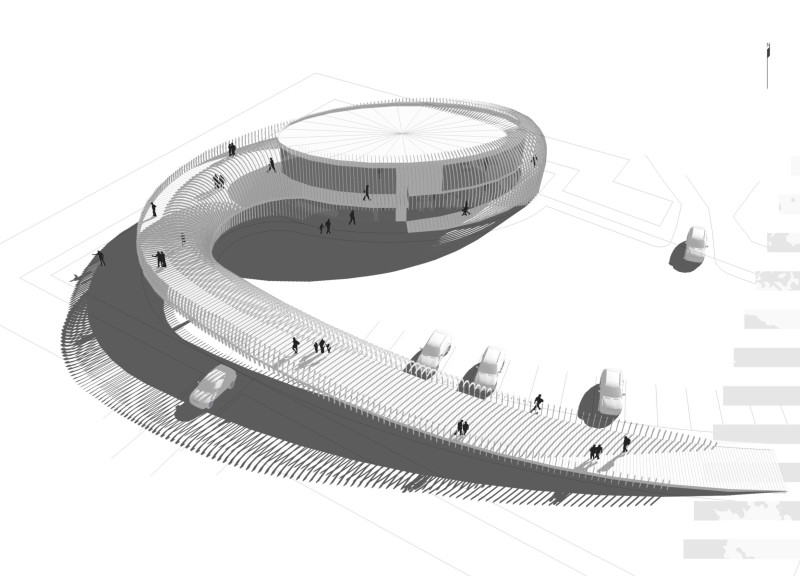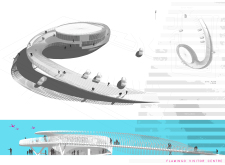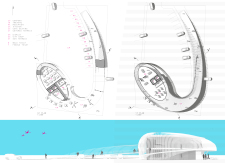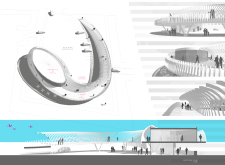5 key facts about this project
The Flamingo Visitor Centre is designed to enhance visitor engagement while creating a strong bond with the nearby Al Wathba Wetland Reserve. The building is situated to take full advantage of views of the wetlands, and its unique boomerang shape draws inspiration from the elegance of a flamingo's feather and nest mound. This approach is not just for aesthetics; it emphasizes functionality and accessibility, making the visitor experience central to its design.
Design Concept
The concept behind the Flamingo Visitor Centre centers on how architecture interacts with nature. The boomerang form aligns with the landscape, allowing clear sightlines to the wetlands. This design creates a connection that encourages visitors to engage with their surroundings. The approach fosters movement and exploration, inviting people to appreciate the beauty of the natural world.
Architectural Features
A notable feature of the centre is the prominent ramp. This assures easy access to all parts of the building, reinforcing a friendly environment. The layout is crafted to allow smooth transitions between indoor areas and the outdoor landscape, emphasizing harmony with nature. Each element is thoughtfully placed to support the flow of movement and interaction.
Facade and Materiality
The building incorporates a double skin façade, which is important for managing light and temperature inside. This design helps with privacy and boosts energy efficiency by allowing plenty of daylight to enter the different spaces. The use of vertical slats in the façade adds visual interest while providing necessary shade, showing a thoughtful response to the local climate. Concrete, steel, and timber screens make up the materials used, selected for their ability to withstand the environment while contributing to the overall aesthetic.
Emphasis on Views
A key design element is the raised platform that focuses visitors’ attention on the wetlands. This positioning creates framed views that enhance the outdoor experience. It encourages visitors to look outside and engage with the surrounding landscape. This careful arrangement invites individuals to connect with the natural environment, enriching their time at the centre. Each aspect of the design works together to highlight the relationship between the built space and nature.

























































